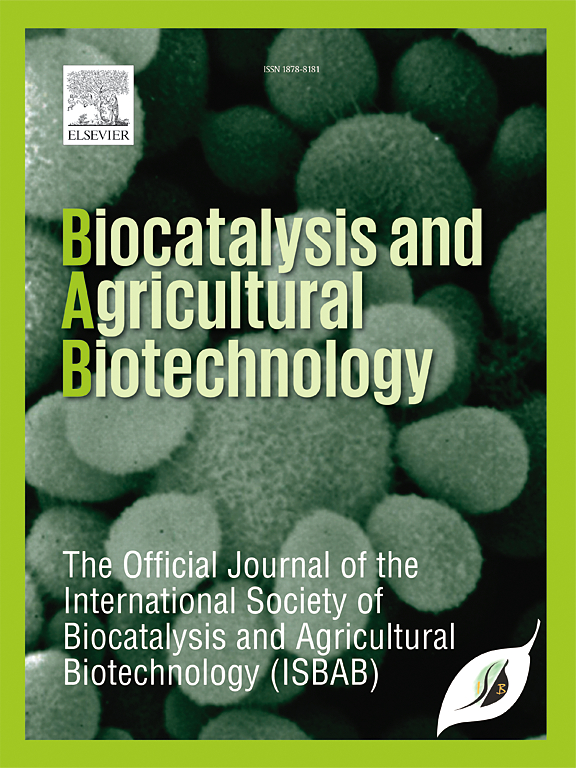A novel phycoerythrin-derived peptide from Colaconema formosanum: Synthesis, in vitro, and in silico study on angiotensin-converting enzyme (ACE) inhibitory activity
IF 3.4
Q2 BIOTECHNOLOGY & APPLIED MICROBIOLOGY
引用次数: 0
Abstract
Colaconema formosanum, the red algae used in this study, has never been documented for its bioactivities as an angiotensin-converting enzyme inhibitor (ACEI). This study aims to discover ACEI derived from C. formosanum with a mixture of enzymes and orthogonal bioassay-guided fractionation through in vitro and in silico approaches. LRDGEIILR (LR-9) was isolated from the protein hydrolysate of C. formosanum digested by a combination of proteases (pepsin and thermolysin). It is derived from phycoerythrin, a protein abundant in most red algae. The LR-9 has an IC50 value of 94.28 ± 1.84 μM. The kinetics of inhibition revealed LR-9 to be a competitive inhibitor. The results of kinetic studies were rationalized further using molecular docking, which showed that LR-9 interacts preferentially with critical residues in the ACE active site. Based on the toxicity prediction, LR-9 was non-toxic. This study suggests that ACEI peptides extracted from C. formosanum could be an alternative source for developing hypertension-treating functional foods.
求助全文
约1分钟内获得全文
求助全文
来源期刊

Biocatalysis and agricultural biotechnology
Agricultural and Biological Sciences-Agronomy and Crop Science
CiteScore
7.70
自引率
2.50%
发文量
308
审稿时长
48 days
期刊介绍:
Biocatalysis and Agricultural Biotechnology is the official journal of the International Society of Biocatalysis and Agricultural Biotechnology (ISBAB). The journal publishes high quality articles especially in the science and technology of biocatalysis, bioprocesses, agricultural biotechnology, biomedical biotechnology, and, if appropriate, from other related areas of biotechnology. The journal will publish peer-reviewed basic and applied research papers, authoritative reviews, and feature articles. The scope of the journal encompasses the research, industrial, and commercial aspects of biotechnology, including the areas of: biocatalysis; bioprocesses; food and agriculture; genetic engineering; molecular biology; healthcare and pharmaceuticals; biofuels; genomics; nanotechnology; environment and biodiversity; and bioremediation.
 求助内容:
求助内容: 应助结果提醒方式:
应助结果提醒方式:


